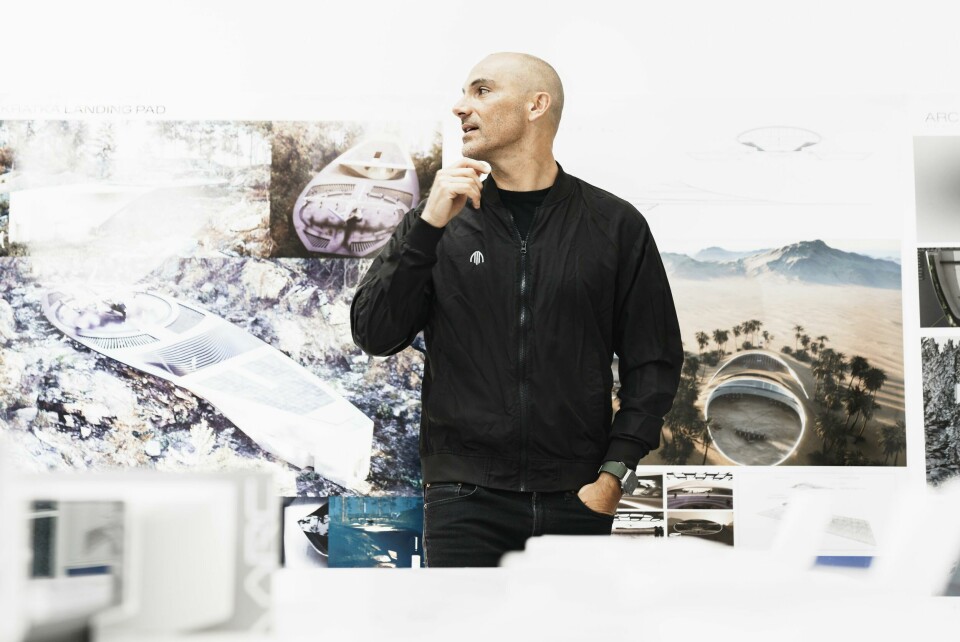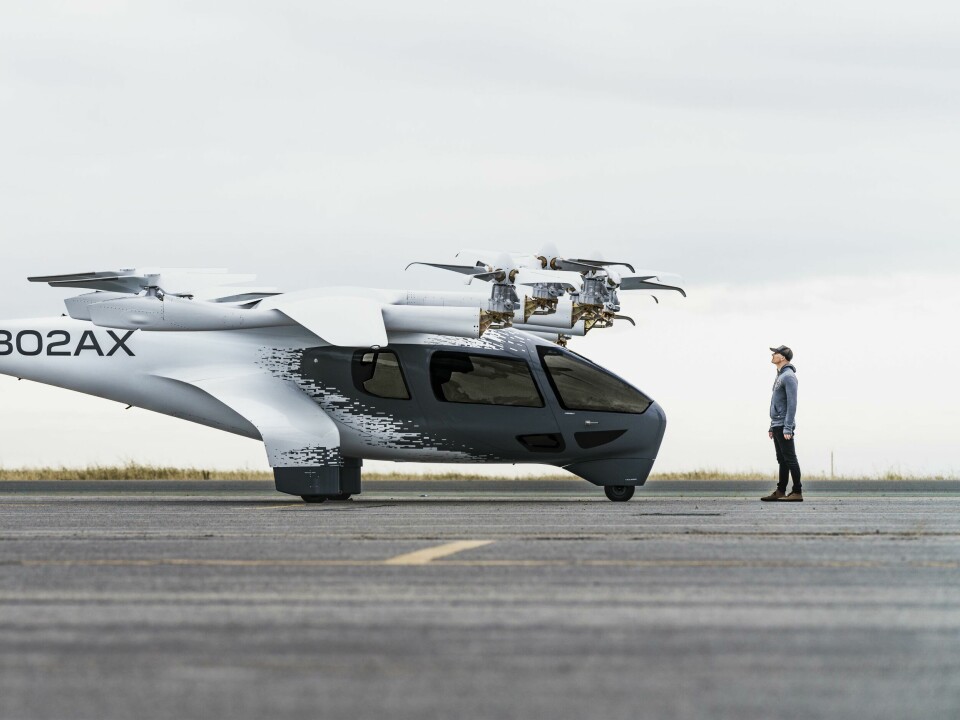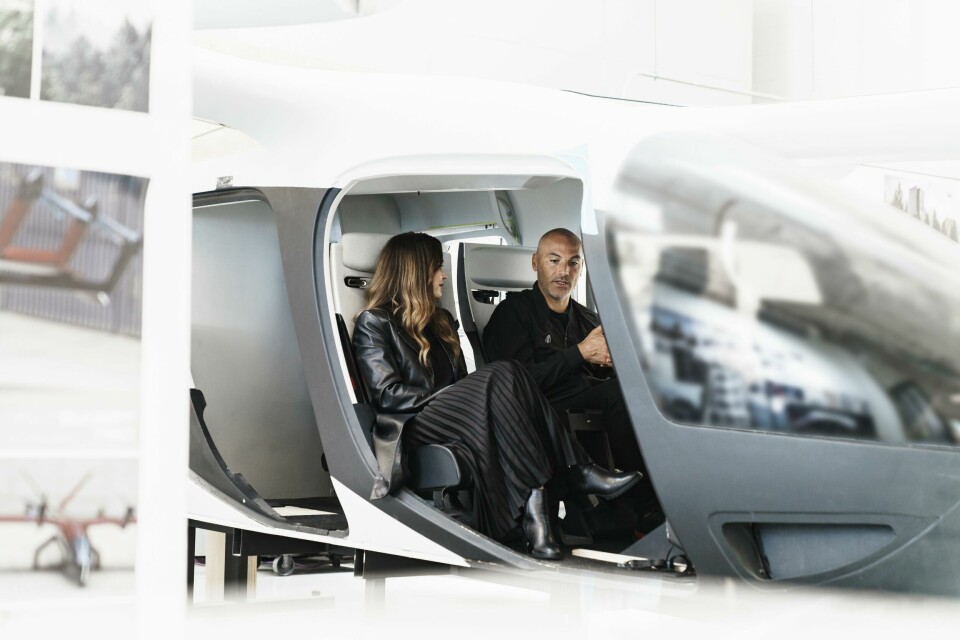
Car Design Review X: Julien Montousse, Archer
Archer design boss Julien Montousse shares his personal approach to design in this exclusive Car Design Review X interview
After spending most of my life designing cars, I saw from a distance that technology breakthroughs were happening in aerospace and that they would unlock new aircraft architectures. I had to choose whether to stay on the outside, or be part of it and steer this new creative era.
I decided to join Archer with the objective of making a world impact. The first step was for me to regroup my thoughts and identify the clear ‘why’. Why are we flying electric vertical take-off and landing vehicles (eVTOLs)? So people won’t be stuck in traffic. They’re going to fly above it. That’s the first obvious layer. It’s a utilitarian value proposition focused on saving time, but I still sensed there was a bigger ‘why’ that will ultimately enrich people’s lives and unlock new possibilities.

Then we took a couple of helicopter flights to do a photoshoot just on the outskirts of LA. We flew at sunset and sunrise, opening my eyes to an incredible Californian landscape casting mesmerising shadows over the city and desert elevations. Rediscovering the place I’ve lived in for several years from such a new and breathtaking view created this incredible emotional response in me. That’s when it clicked. New eVTOL aircraft won’t just save people time, they’ll provide a new perspective on the world below to better connect and better understand the environments you live in. This technology has the power to transform. It will unlock the skies, deliver new experiences and define the future of movement.
When I arrived at Archer there was no design DNA. The engineering team was focused on building the ’Maker’ aircraft as a technology demonstrator to the world. Even though building a product vision was on my list, I first needed to grow my own knowledge about aerospace principles, pushing my craft as a designer outside of the automotive world. Earlier in my career, I had consulted with SpaceX on the Dragon 2 cockpit design and loved the drastic requirements imposed by the laws of physics. So I knew delivering a timeless eVTOL aircraft design that fit within the strict performance parameters would be a challenge. An eVTOL is neither a helicopter nor a plane. It is a new architecture.
It needs to start with human-centric design instead of hardware-centric design
At Archer, the design approach had to be different. We are calling it ‘Transformative Design’ which means designing a product that will positively impact humanity as a whole. So we aren’t just building an aircraft, we’re creating an entire infrastructure that enables you to live a certain way. We are designing the whole journey from the first mile to the last mile, from the aircraft to landing infrastructures to the accompanying digital app. We are calling this ecosystem the ‘Archer world’.
This is the future of movement and as a designer I’ve become a part of that change. Car design is the emotional bridge between the driver and the product. That relationship is nonexistent in today’s aircraft design. Why? The current mathematical and rigid execution is focused almost entirely on engineering performance. Aerospace design needs to evolve in order to be emotionally fluid – it needs to start with human-centric design instead of hardware-centric design.
First and foremost, the aircraft has to look like it can fly beautifully. This inspires confidence and draws the passenger in. There are many eVTOL players out there, but a lot of them are missing design maturity. If we go back to the golden era of flying in the middle of the last century, aircraft design pursued an assertive look. They were built around this dream of flying and everyone that flew at that time was astonished to be travelling free in three dimensions.

Our aircraft will take off vertically, so how do we translate that? For inspiration we looked at birds of prey. When you see one vertically stalling just before diving for an attack, there’s a strong character that is very recognisable – the shoulders go up and the wing tips go down. We felt this was the perfect gesture for our aircraft because that’s what our planes will do – transition from horizontal speed to traveling vertically upwards and downwards.
With private jets, there is an intention to make the cabin look like a luxury living room, but this is not who we are as a brand. We are aiming for a purposeful aesthetic. The ergonomics of the seats were especially important. The shapes are meant to hold you. It’s one thing I carried over from Mazda, what we called ‘Jinba Ittai’ or oneness, to ‘become one with the machine’. We also worked hard on the vision angle out the window, so the belt-line had to be pretty low. To keep the seats’ H-point low we even had to re-engineer the landing gear, so you don’t have to climb up to get in. This allows the plane to sit lower, which we’re super proud of. Nobody’s ever done that before.
It is wide open for the young design generation to take the lead on expanding human capabilities
Being in the Silicon Valley mindset, there is a lot less vertical structure in the organisation. We have these big whiteboard sessions almost every day, which doesn’t really happen in car design. Yes, there’s a creative brief being addressed as an individual, but the big breakthrough often happens connecting the art and science of several groups together in order to solve hard problems. We’re really connected as a team. We try to hire talents who have a creative appetite to work as a team. It’s part of our interview process.
The practice of automotive design is still way ahead of today’s aerospace design – in its attention to detail, the relationship to the ergonomics and connecting with the customer. But having made the jump, it has answered the call of my life’s purpose to continuously seek challenges and create a world I want to live in. The eVTOL industry is the next frontier of design. It is wide open for the young design generation to take the lead on expanding human capabilities and making a true world impact. How amazing is that?



